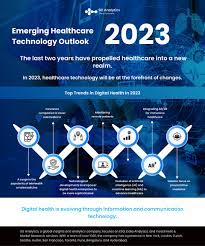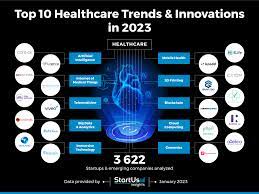The healthcare industry has a lot of work to do. With high inflation, record-low unemployment, and a workforce that is struggling with burnout, healthcare leaders must find ways to keep their organizations healthy. Top Healthcare Industry Trends for 2023.
Innovation is key for overcoming these challenges. Leaders must move beyond promising new technology and processes, and instead prove that their ideas work.

1. Artificial Intelligence
Artificial intelligence has made healthcare much more manageable for practitioners and patients. Its benefits include better productivity, quicker responses and improved patient outcomes.
Despite the many advantages of AI, it has some drawbacks. Its use in healthcare poses ethical issues such as data privacy and algorithm transparency.
Healthcare organizations use AI to automate clerical tasks such as claims processing, medical documentation, revenue cycle management and patient records management. It also assists with remote patient monitoring and telehealth services.
2. Robotics
Despite the stigma of robots, this technology is proving its worth within the healthcare industry. Rather than acting as an invasive machine, these robots help to take care of basic hospital tasks, such as disinfecting rooms or restocking supplies.
Hospitals are also using robots to facilitate telemedicine, especially for patients in remote areas. These human-sized telerobots allow consultants to log in and read patient investigations and examination data, communicate with patients and even provide consultations remotely. This helps to reduce travel expenses and provides specialised care to patients who would otherwise be unable to get it.
3. Wearables
Healthcare mobile apps and wearables allow patients to share personal health data with doctors, enabling remote monitoring. This can help reduce the cost of medical visits and improve diagnostics.
Wearables include smartwatches and fitness trackers that monitor users’ heart rate, calorie intake, sleep patterns, exercise data, and other health parameters. They can send this information to healthcare practitioners continuously.
This technology could be especially useful in telemedicine. Consumers will want to use this technology if they feel it’s safe, secure, and easy to navigate.
4. Big Data
Big data analytics improves patient experience by digitizing records, providing proactive care and reducing costs. This improves customer service and loyalty. It can also help reduce operational costs by integrating patient data with supply chain management.
5. Biopharmaceutical Innovation
Increasing workloads, economic pressures and rising awareness of healthcare equality are pushing leaders to improve operational efficiencies. This includes embracing innovations such as telehealth and hospital-at-home models to reduce costs.
Value-based care remains the industry’s white whale, and 2023 is likely to see more progress in implementing this shift. However, proving ROI on new technology will be key as healthcare organizations battle financial headwinds and budget constraints. This will require careful attention to balancing push and pull incentives for innovation.
6. Remote Patient Monitoring
A major trend in the healthcare industry is remote patient monitoring (RPM). RPM technologies are part of the broader telehealth industry.
RPM devices can be as simple as blood pressure cuffs, thermometers, or glucometers. Or more advanced, such as video or audio call treatments with physicians.
These technologies make healthcare more convenient for patients and also help hospitals reduce costs by reducing the number of readmissions and emergency room visits. Patients can also be more compliant with their doctors and avoid health crises by accessing regular real-time data.
7. Virtual Collaboration
A healthcare technology trend accelerated during the pandemic, virtual collaboration allows more experienced staff members to mentor their colleagues remotely. This can help combat burnout and improve staff morale.
Interprofessional collaboration also levels the playing field for each member of a healthcare team, acknowledging that each has a valuable perspective. Using a live collaboration platform, experienced sonographers can help their local counterparts remotely, while interventional physicians can use the same tool to discuss patients’ medical status post-ultrasound.
8. Social Determinants of Health
Despite the COVID-19 pandemic, healthcare organizations continue to focus on innovation. However, the onset of this year’s economic slowdown could dampen the sector’s momentum.
Health systems will prioritize technology that augments and automates operations, handling tasks that keep doctors from the bedside or patient. This includes tools that streamline revenue cycle processes.
Additionally, they should address the social determinants of health (SDOH), which include non-medical factors that affect health. This will reduce health disparities among certain populations needs read more hear.




















